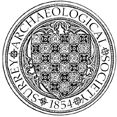Post-medieval
Burstow Golf Course, Antlands Lane, Shipley Bridge
Former Page Works, Forge Lane, Sunbury on Thames
Saxon Primary School, Briar Road, Shepperton
25–27 High Street, Stanwell
90–106 High Street, Staines-upon-Thames
St John the Evangelist Church, Redhill
Excavation by L Capon of AOC recorded 266 graveshafts with a total of 282 burials recovered and retained for osteological assessment. The burials can be dated to 1843--1914 when the graveyard was in use. Early cemetery practice appears to show careful planning and management with graves aligned west--east in regular north--south rows. Later burials show dense overcrowding with burials tightly packed into any available space, creating a complex sequence of intercutting graveshafts.
Reigate Hill
Excavation by D Hunt of the Wings Museum recovered finds associated with a Flying Fortress aircraft that crashed in the area on 19 March 1945.
Broadwood’s Tower, Box Hill, Mickleham
Excavation by P Harp and S Hill of Plateau of the interior of the tower ahead of National Trust work to the Grade II Listed folly. A fill, to a depth of c 0.9m above external ground level, was revealed. The lower 0.3m of the fill produced quantities of unknapped flint, a few fragments of Horsham stone and two unfrogged, yellow bricks. The flints and stone probably originate from the structure, although no mortar was observed adhering to them.
42 Upper Fairfield Road, Leatherhead
Photographic survey by P Barker-Mills of Mole Valley District Council recorded external architectural details of the late Victorian property that latterly housed the Leatherhead District Social Club. A post-medieval well was revealed within the footprint of the demolished building, constructed from unfrogged bricks and lime mortar. No other finds or features of archaeological interest were revealed.


